Skittles Rainbow Experiment – Science Activities for Kids
Are you looking for a simple, exciting science experiment your kids can enjoy and learn from? The Skittles Rainbow Experiment is a great way to introduce them to scientific concepts, and the best part is that it only requires a few basic items.
This fantastic activity involves utilizing Skittles candy, a plate, and some warm or hot water to create a marvelous display of colors. When the sugar in the Skittles dissolves, it releases vibrant colors into the water, forming a stunning rainbow-like pattern. This experiment is a visual treat for your kids and provides an opportunity to teach your children about dissolving, absorption, and color mixing.
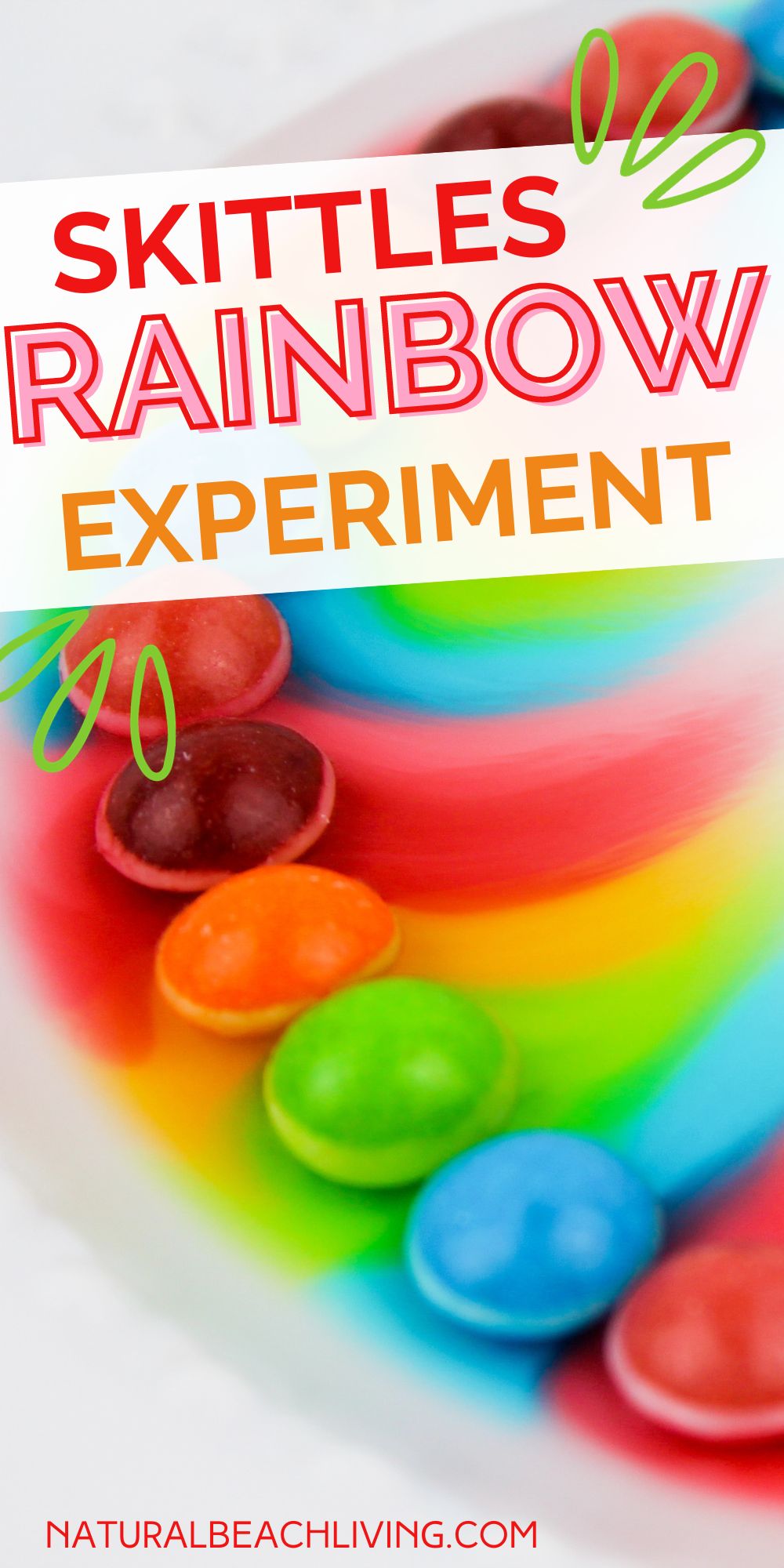
Skittles Rainbow Experiment
Engaging and easy to set up, the Skittles Rainbow Experiment is an excellent activity for a rainy day or as part of a science curriculum. Give it a try and have fun while inspiring your kids to learn more about the fascinating world of science.
affiliate links can be found on this blog at no cost to you.
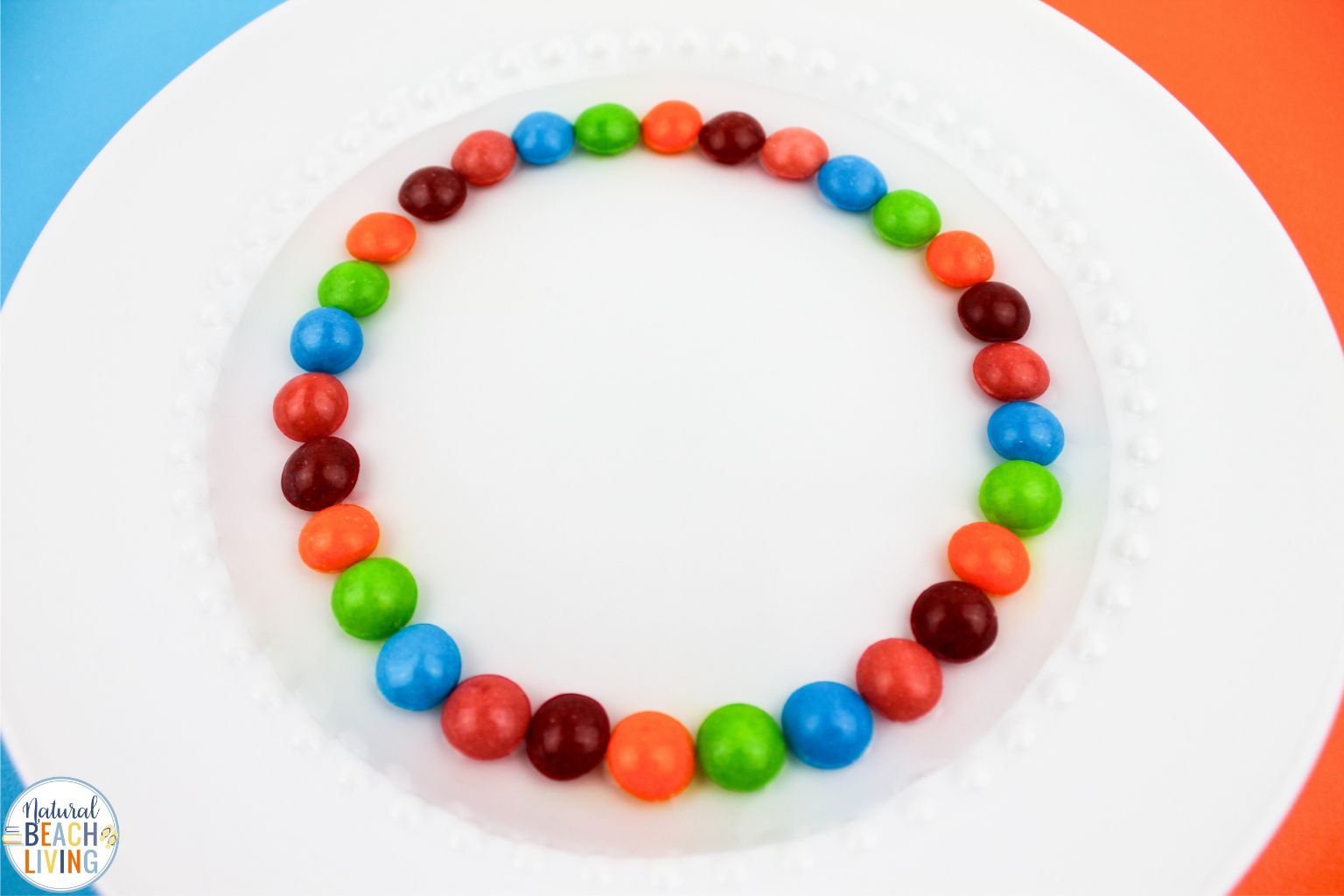
Background on Skittles and Color
Skittles are well-known for their vibrant and colorful appearance. These small, round candies have a hard sugar shell on the outside, dyed with various colors to give them their unique and eye-catching look. Each color represents a different flavor, making Skittles a tasty and visually appealing treat.
The Science Behind Candy Colors
Understanding the science behind Skittles’ colors can help you appreciate the candy even more. The outer shell of Skittles is coated with a mixture of sugar, food coloring, and a waxy substance to maintain its round shape. The food coloring in the shell is comprised of dye, determining the hue of each candy.
Here’s a simple breakdown of the key components of Skittles and their purpose:
- Sugar: Provides sweetness to the candy
- Food coloring: Creates the various colors of the candy shell
- Waxy substance: Protects and maintains the shape of the candy
When you place Skittles in a circle on a plate and pour warm water over them, the combination of sugar and dye molecules starts to dissolve. This dissolution creates a visually impressive rainbow effect as the colors merge into one another, demonstrating simple scientific concepts like dissolving and color mixing.
As you explore the fascinating world of Skittles and color science, remember that each component of these candies contributes to their visual appeal and scientific intrigue. By understanding the role of colors in Skittles, you can fully appreciate the candy’s vibrant appearance and potentially uncover new, fun ways to experiment with them.
Skittles Rainbow Experiment: A Step-by-Step Guide for Colorful Results
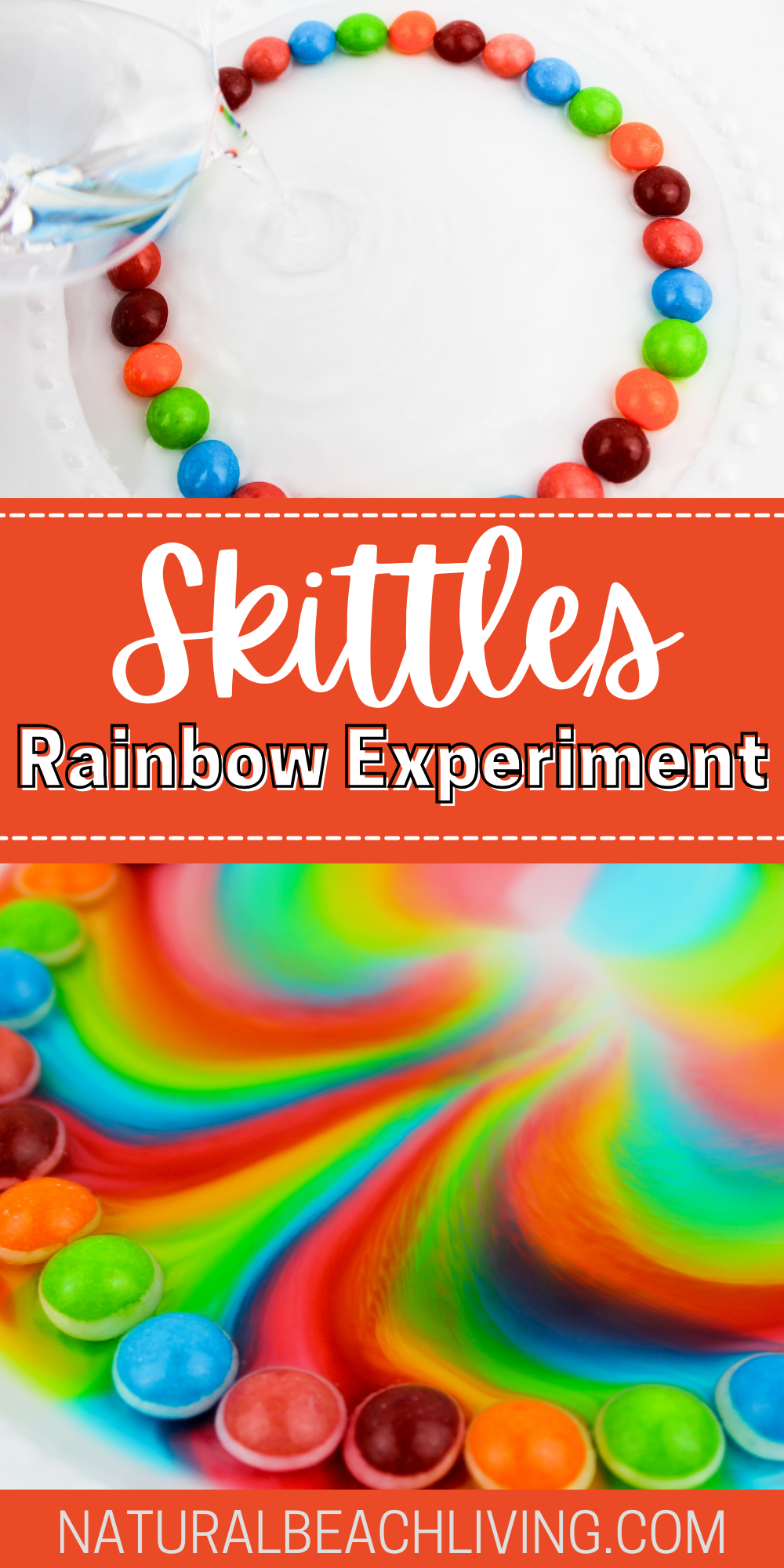
The Rainbow Experiment Explained
Objective of the Skittles Rainbow Experiment
The Skittles Rainbow Experiment is a fun and easy science experiment that demonstrates color dissolving principles and color mixing. The objective is to create a visually appealing rainbow from Skittles candy by dissolving their outer colorful coatings using warm water. This activity suits children of all ages and encourages learning about dissolving and color blending.
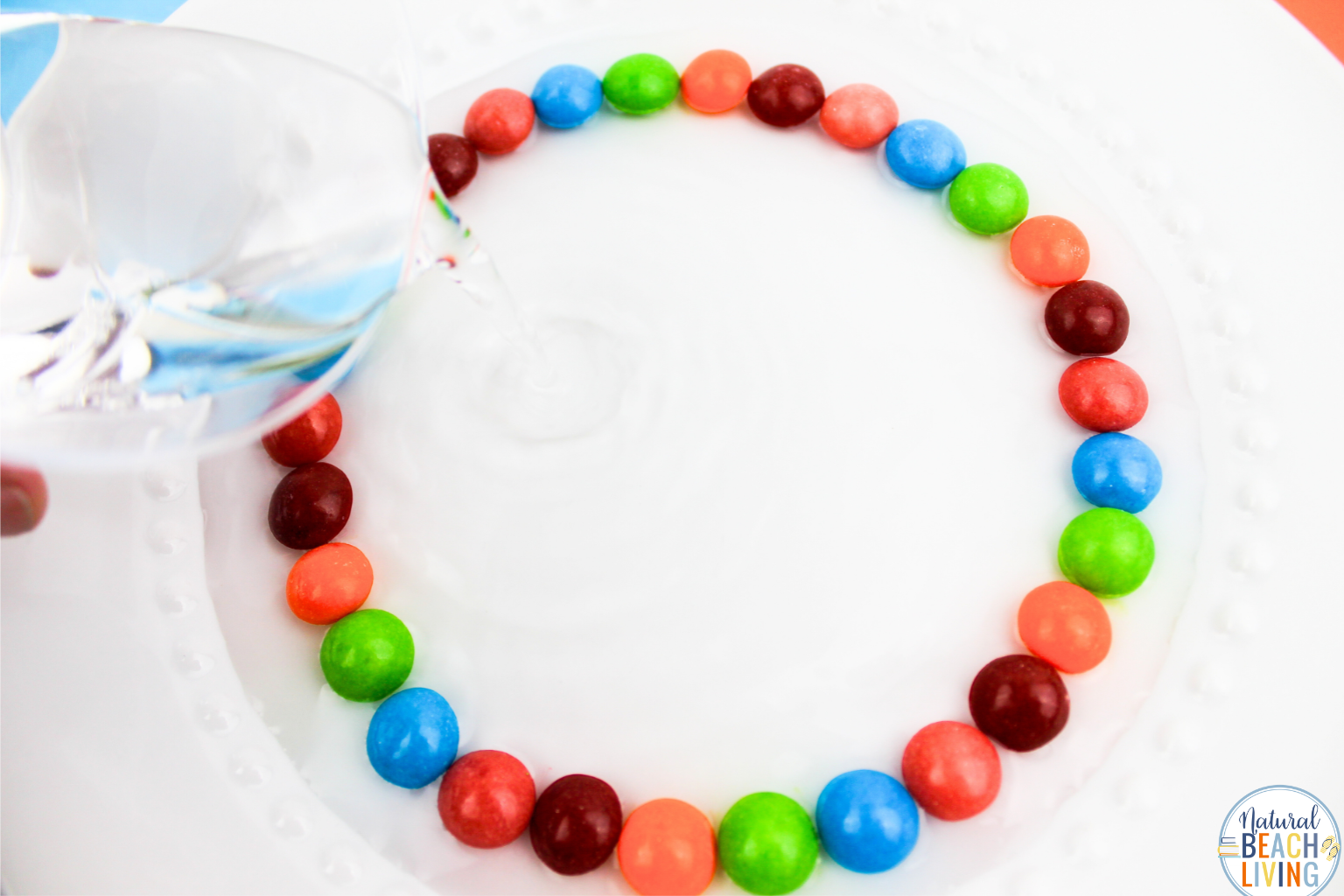
Principles of Color Dissolving
In this experiment, you’ll need:
- Skittles (various colors)
- A plate or bowl (preferably white)
- Warm water
Science Project Ideas

Step 1: Arrange the Skittles in a circle around the edge of your plate or bowl. You can create or organize different color patterns.
Step 2: Pour a small amount of warm water into the center of the plate, just enough to cover the bottom. Warm water helps the sugar coating dissolve faster due to its higher temperature and energy.
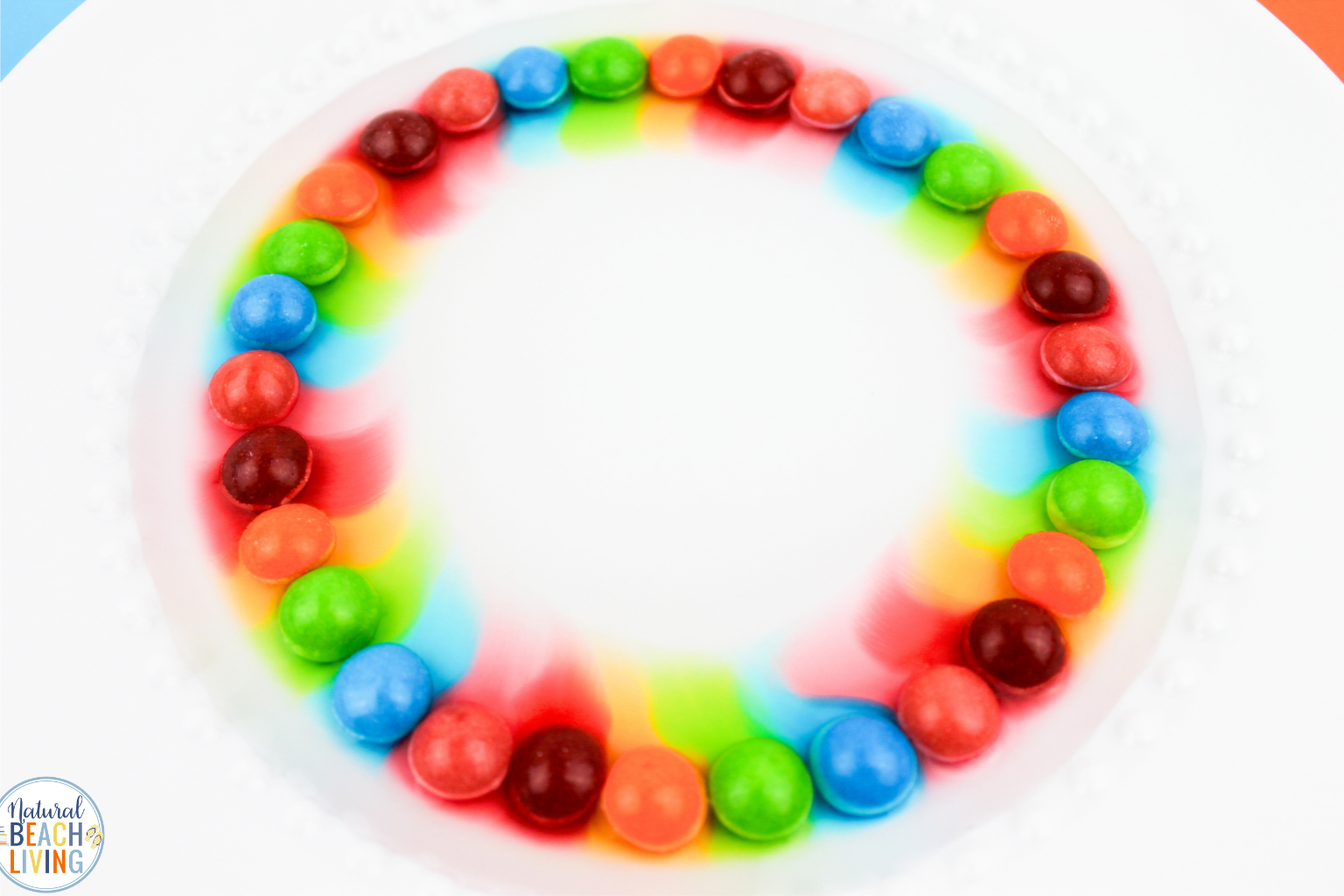
As the colored sugar dissolves in the water, you’ll notice that the colors begin to spread toward the center of the plate, creating a mesmerizing rainbow effect. The sugar in the Skittles’ outer coating is water-soluble, dissolving readily in water. The color-dissolving principle at work in this experiment relies on the fact that colored sugar coatings dissolve at different rates in water, depending on how close the colors are to each other on the plate and the temperature of the water used.
As the colors spread and mix, you may observe secondary colors forming where two primary colors meet. This reveals the blending of colors, and it’s a great way for kids to learn about color theory hands-on.
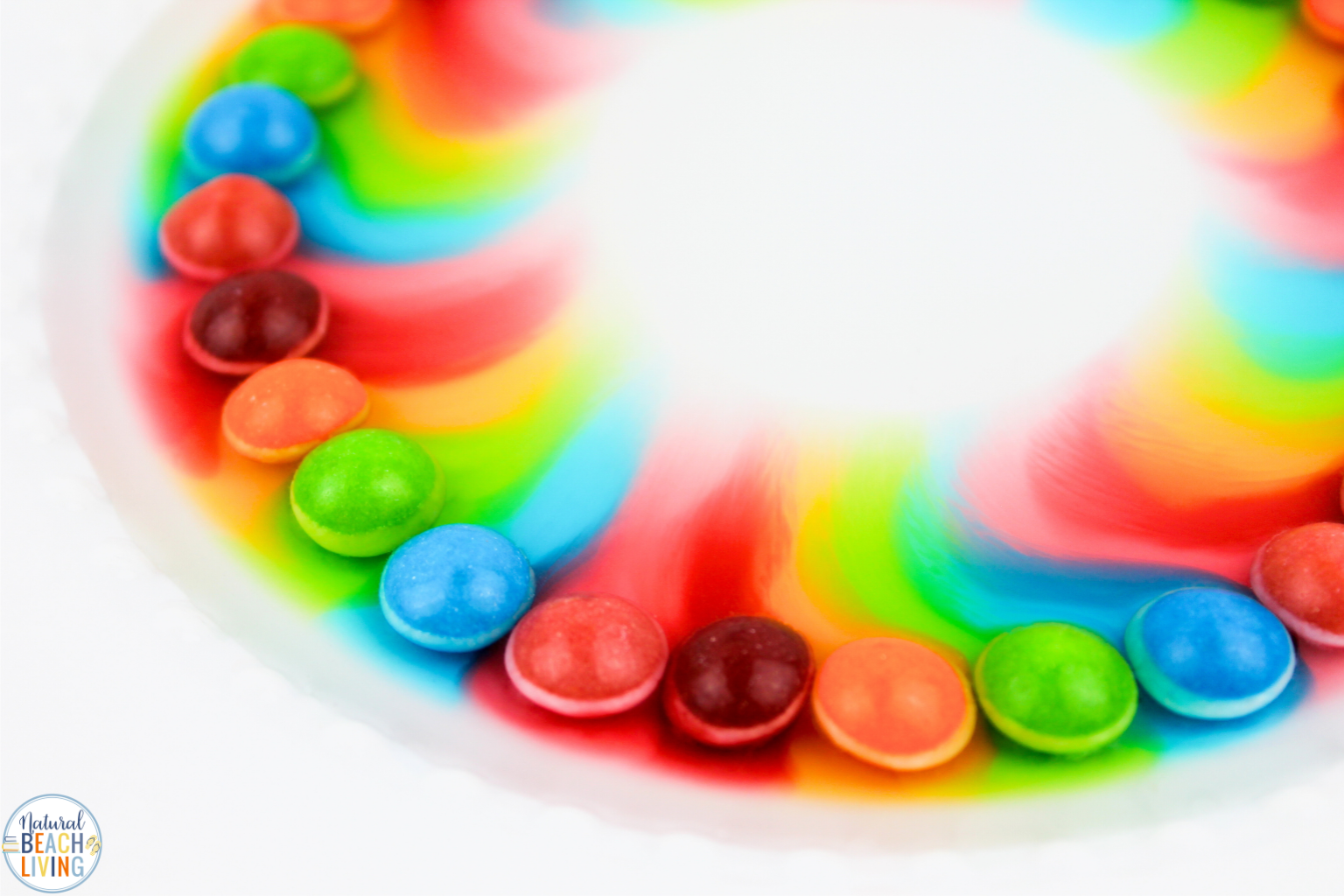
Science Activities for Preschoolers
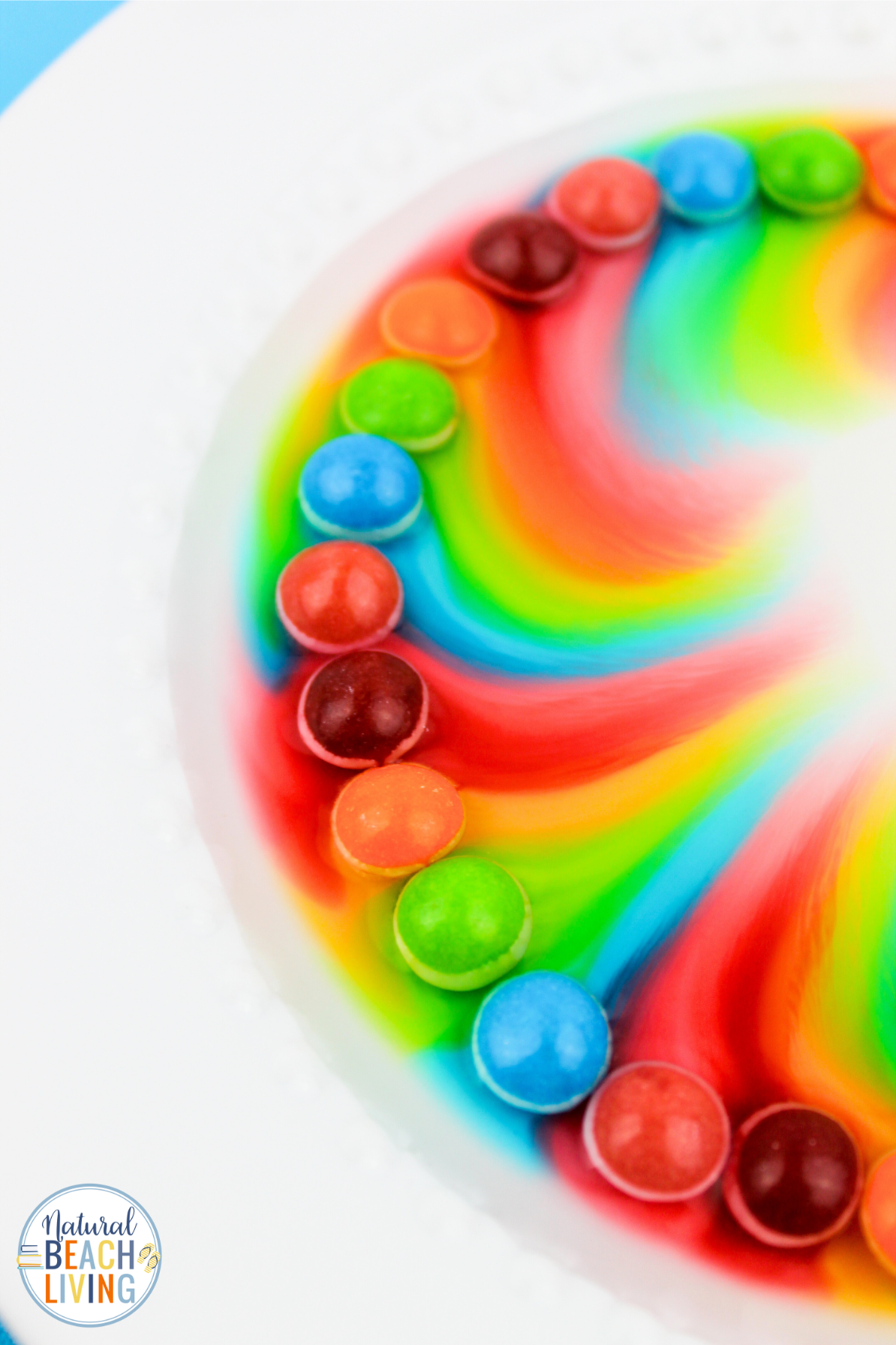
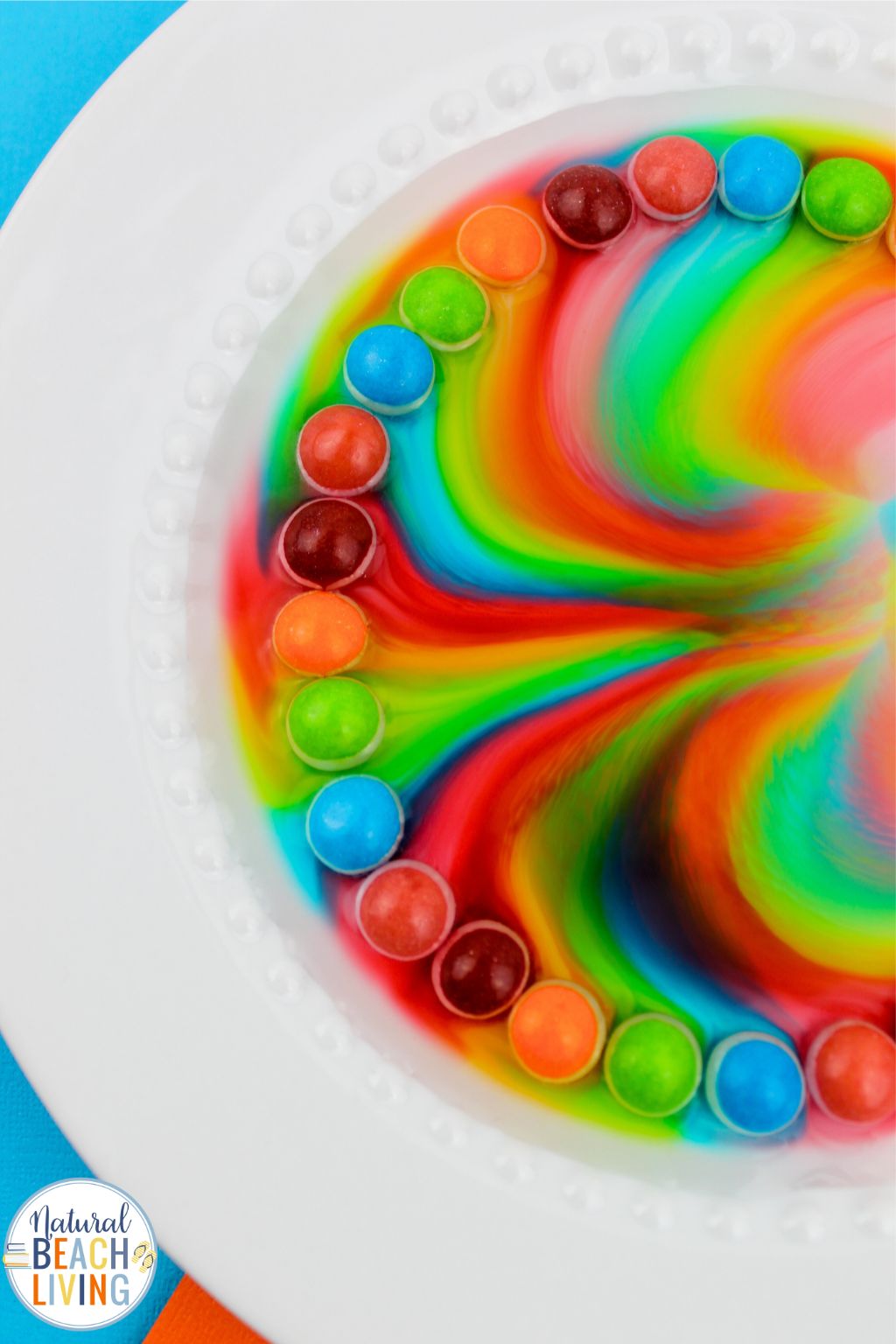
Give the Skittles Rainbow Experiment a try, and enjoy watching the captivating display of merging colors while learning valuable principles of color dissolving and sugar dissolving in water.
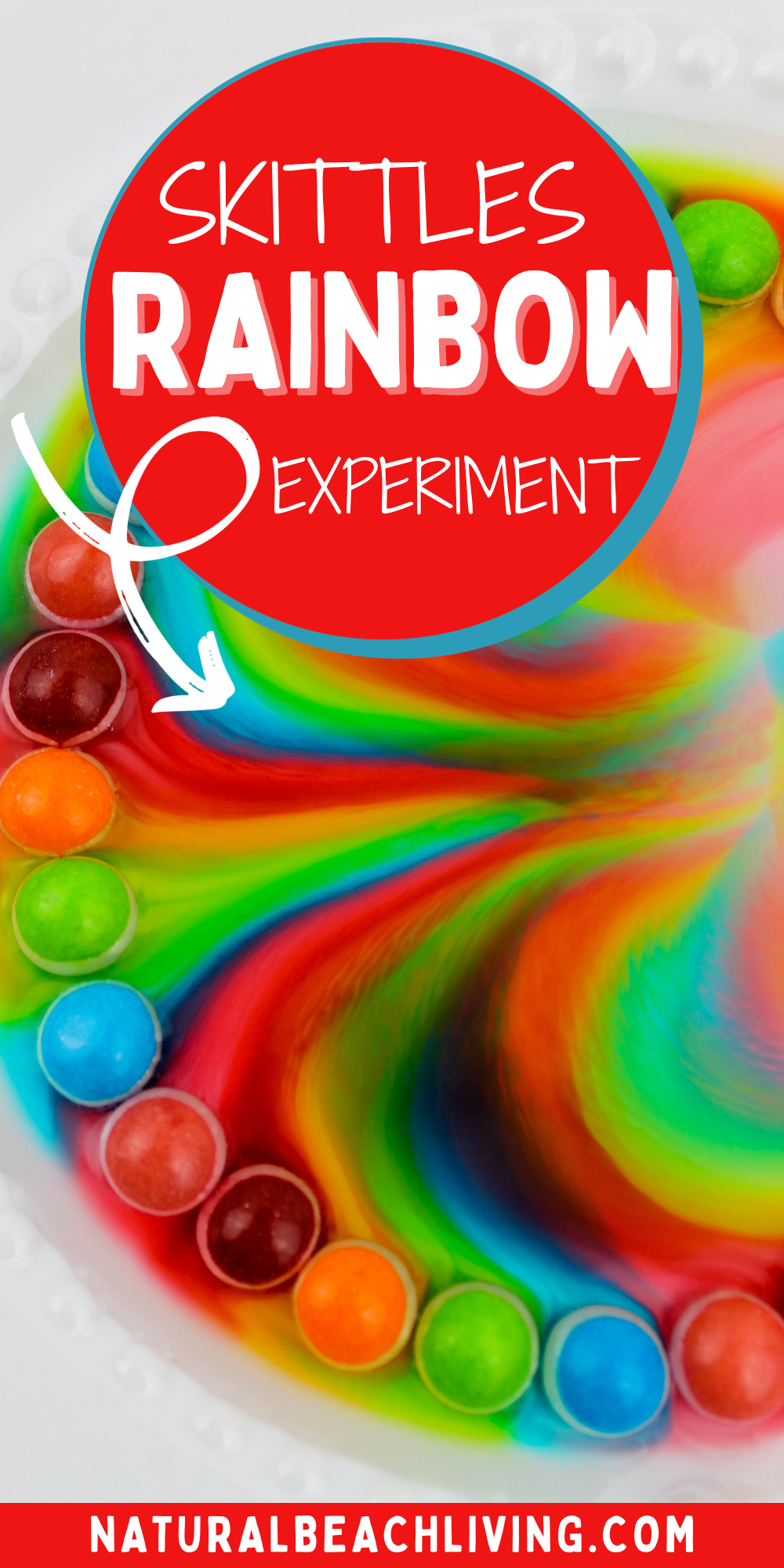
Preschool Science Experiments
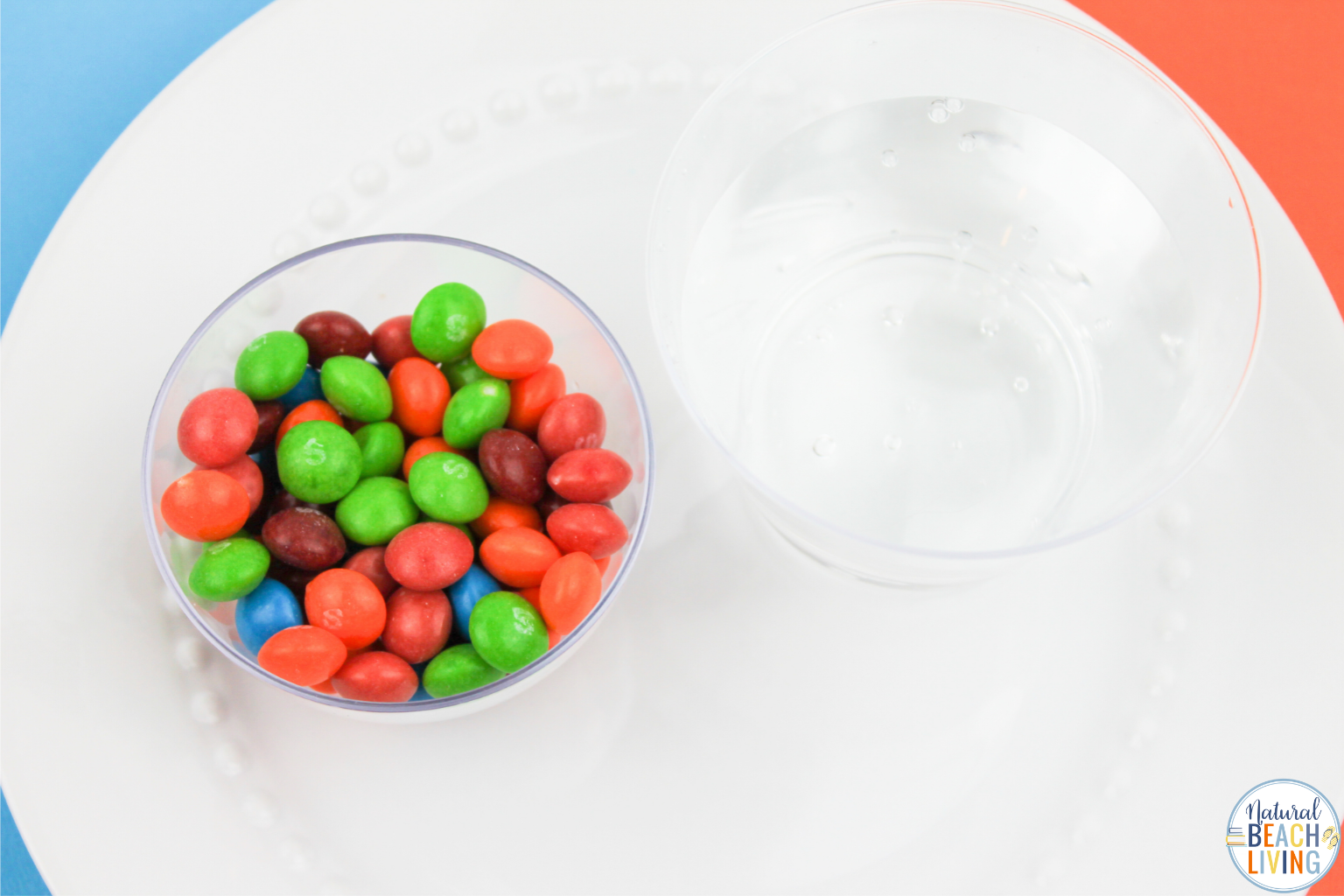
Required Materials
- 1 package of Skittles (Can be any variety – I used the “sweet and sour” variety for this project)
- small white plate
- 1 cup of warm water
Directions:
On the small plate, line the Skittles up around the middle. Try to create a pattern of colors with the Skittles for best results.
Slowly pour the water into the center of the plate. Pour enough to cover the bottom of the Skittles.
The colors from the Skittles will start to move towards the center of the plate and come together.
Observe what happens until the colors fade out.
Observing the Results
In the Skittles Rainbow Experiment, you’ll witness a beautiful and colorful display of patterns that can help you understand some fascinating scientific concepts.
Focus on observing the results and the connection between colors and science.
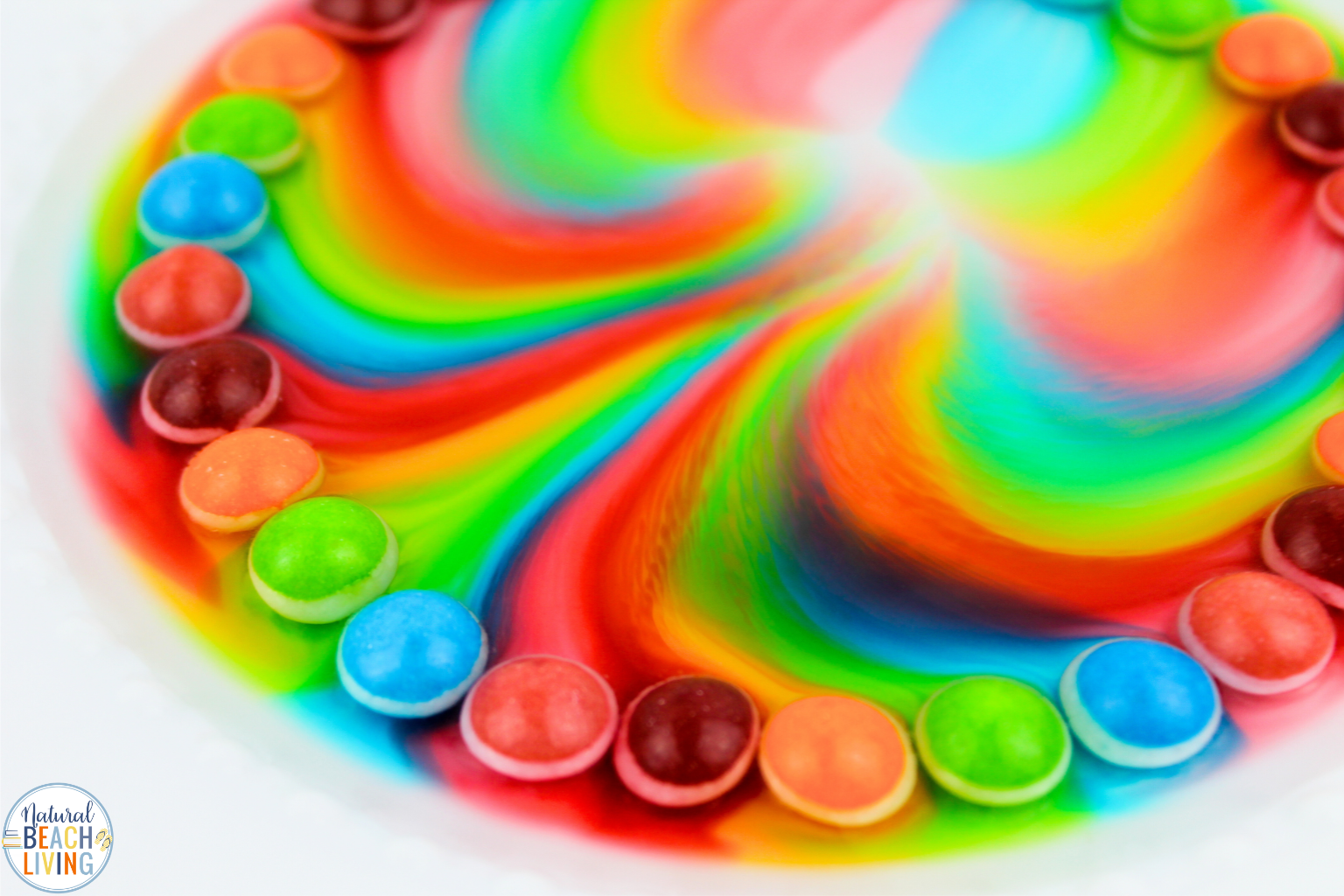
Colors and Science
When you perform the Rainbow Skittles Science Experiment, you will notice a beautiful rainbow forming as the colors mix in the water. As the Skittles dissolve, their colors migrate from the edges of the plate toward the center. This creates a stunning visual effect, illustrating a pattern of layered colors.
Pay close attention as they interact to create a colorful rainbow. The mixing of the colors and the formation of patterns are primarily due to water density and the properties of the individual colors.
Water density plays a crucial role in creating the patterns observed in this experiment. Warm water can dissolve Skittles more effectively, allowing the colors to spread and mix. The layers you observe result from different densities; for instance, less dense colors will float above the denser ones to create stratified layers.
Another aspect to observe is how the different flavors of Skittles correspond to their colors. The experiment lets you see which colors are present in each flavor and how they can influence the final rainbow pattern. As you watch the colors travel through the water, you may notice that specific colors mix together while others maintain their hues.
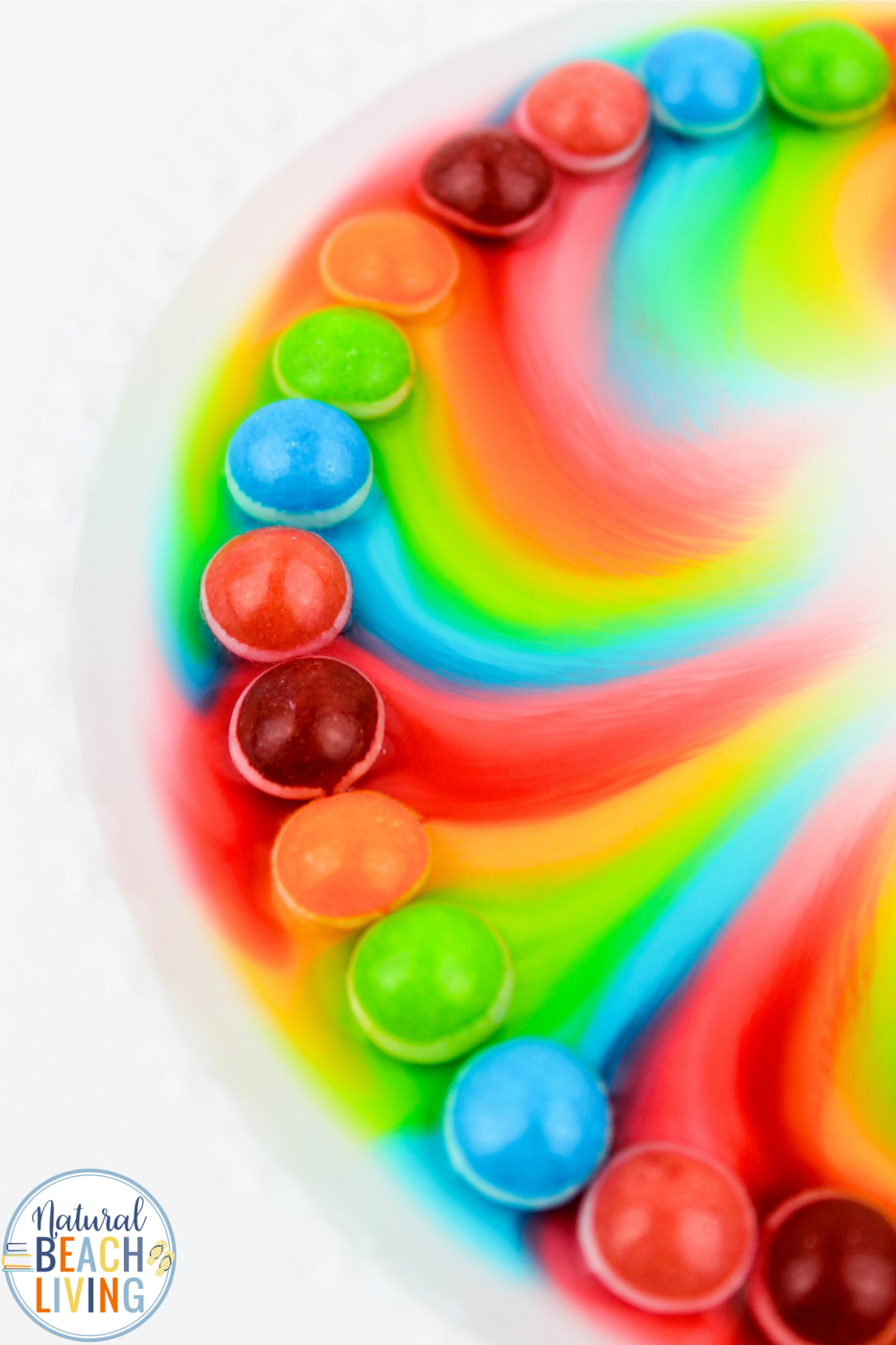
When performing the Rainbow Skittles Science Experiment, focus on observing the following aspects:
- The beautiful and colorful patterns formed
- The movement and mixing of colors
- The role of water density in the creation of layers and patterns
- The correspondence between colors and flavors
As you conduct this experiment, enjoy the process and appreciate the captivating visuals it creates. Use this opportunity to deepen your understanding of the scientific principles at play.
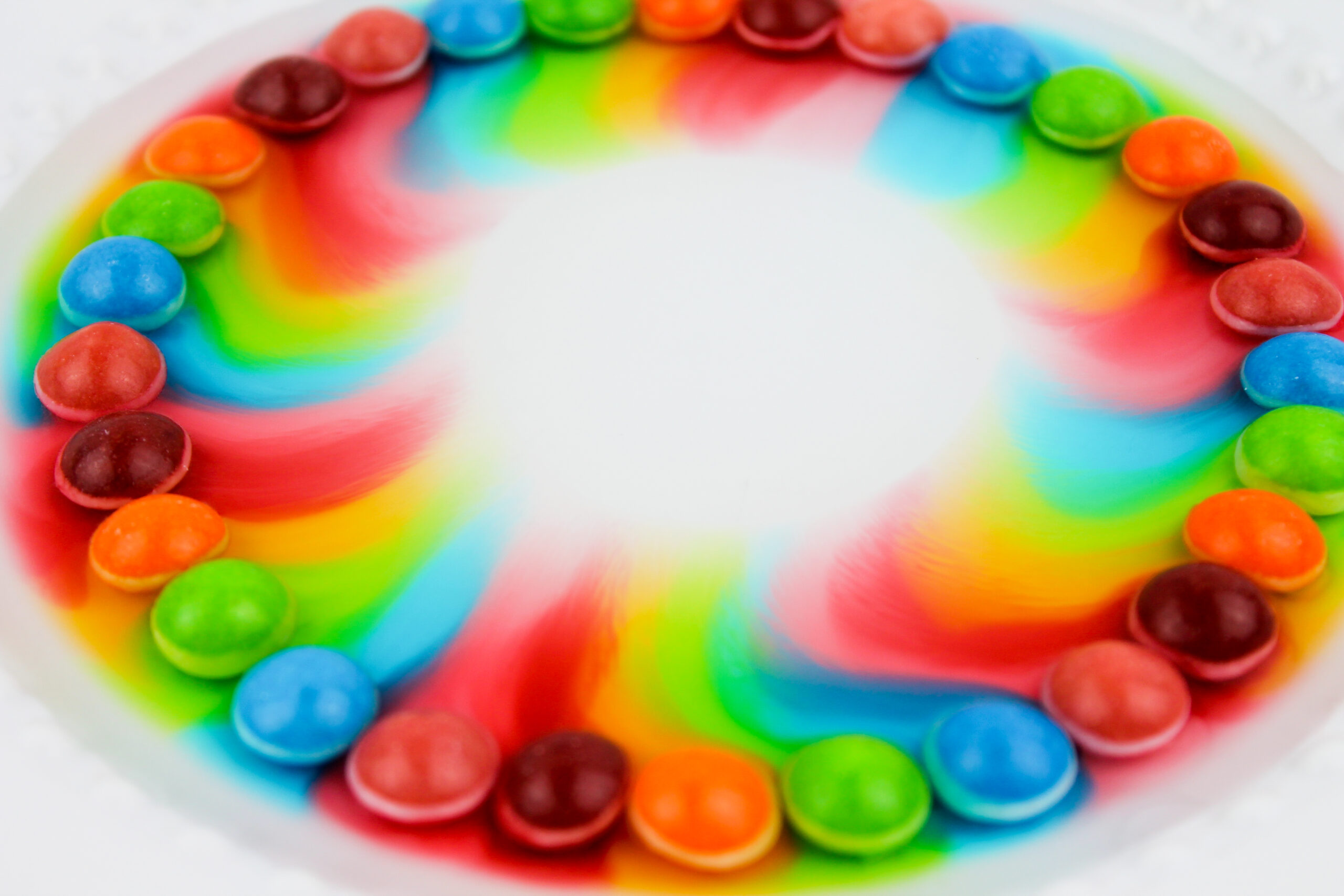
Scientific Concepts for Kids
The Skittles Rainbow Science Experiment is a fun, educational, and easy-to-conduct science activity that children of all ages can enjoy. It is especially suitable for toddlers and preschoolers as it helps them grasp basic scientific concepts while engaging their natural curiosity.
Educational Value of the Experiment
1. Color Mixing and Dissolving: When you place the Skittles in warm water, their colorful shell dissolves, and the colors start to spread outward. This process demonstrates the effect of warm water on the candy and the way colors mix and blend to create new shades.
2. Fine Motor Skills Development: As kids arrange the Skittles in a circular pattern, they practice their fine motor skills using their pincer grasp. This is important for their overall development and helps with handwriting, buttoning clothes, and other daily tasks that require dexterity.
3. Introduction to Chromatography: Though simple, this experiment introduces an essential scientific technique called chromatography, which separates the components of a mixture based on their different rates of migration. In the Skittles experiment, kids can observe how different colors move at varying speeds to create a rainbow effect.
4. Hypothesis & Prediction: To add educational depth to the experiment, ask children to hypothesize and predict the outcome before adding water. Will the colors mix? Will a rainbow form? This stimulates critical thinking while teaching kids the scientific method.
The Skittles Rainbow Experiment proves that science can be fun and enjoyable for kids. Try it with your children, and watch them develop their scientific understanding, curiosity, and motor skills.

Skittles Science Variations and Extended Learning
Altering Conditions for Different Effects
You can modify the Skittles Rainbow Experiment to observe how different conditions affect the results.
- Temperature of water: Experiment with hot water instead of room temperature water and observe the differences in the rate of color spreading.
- Using vinegar: Replace water with vinegar and notice if the acidity impacts the speed or quality of the rainbow formation.
- Adding food coloring: Introduce food coloring into the water to observe any changes in the color interaction between the Skittles and the water.
- Sugar and food coloring mixture: Create a new mixture by combining sugar and food coloring in various proportions to see how this altered solution affects the Skittles.
Conducting these variations will provide further understanding of the experiment and help you and your children draw conclusions on the impacts of different conditions.
Fun Science Experiments
If you enjoyed the Skittles Rainbow Experiment, consider trying these additional experiments to expand your scientific knowledge:
- Water Xylophone Science Experiment: Utilize water, food coloring, and glasses to see how you can make music. This water xylophone is an exciting sound-based science experiment. Learn how sound travels through sound waves.
- Classic Science Experiment: Explore classic science experiments like baking soda and vinegar volcanoes, growing crystals, or creating slime. These activities are excellent ways to learn the scientific method and form hypotheses around your observations.
Remember the goal is for your children to stay curious and strive to learn more through experiments and investigations.
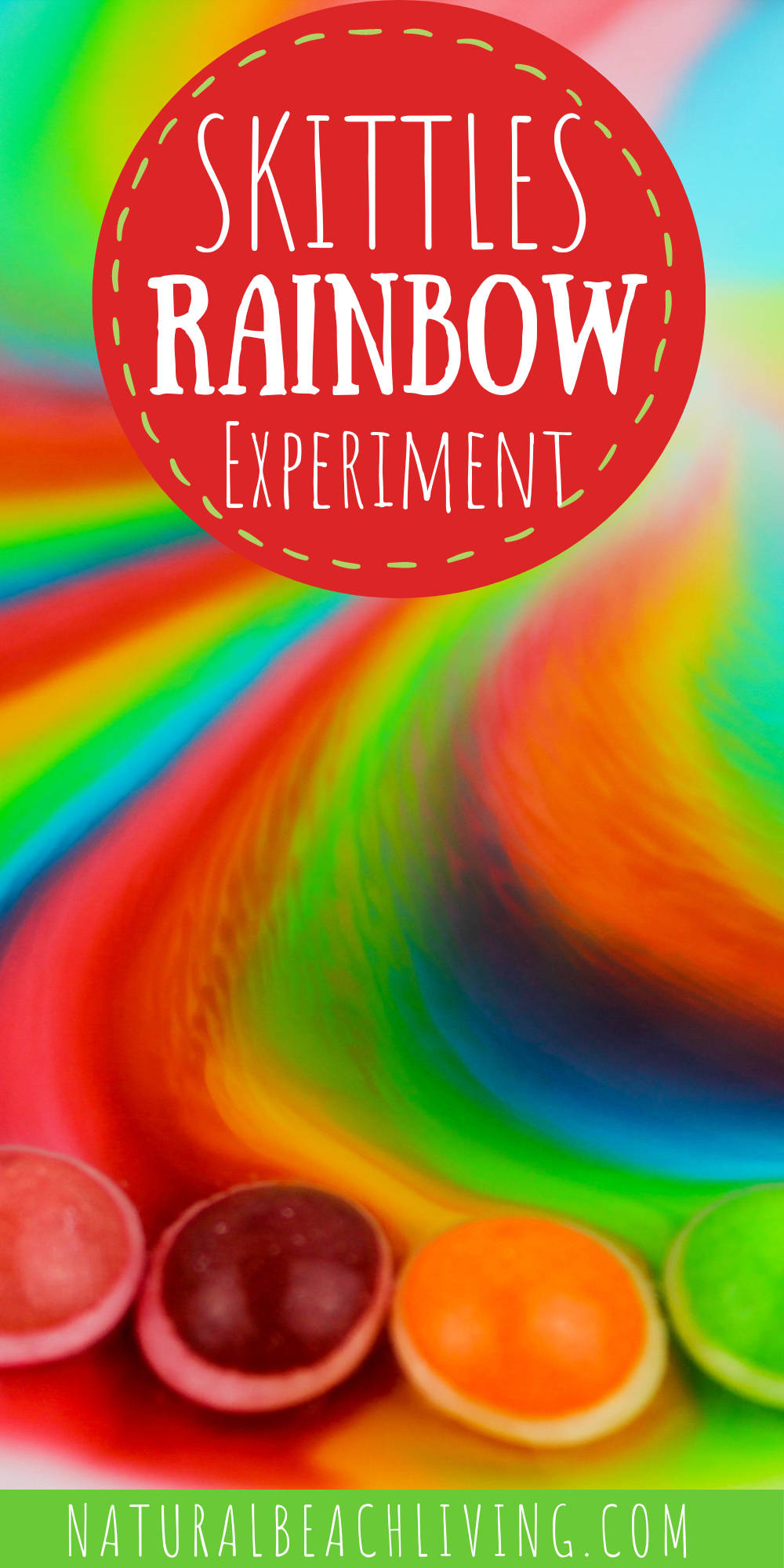
Skittles Rainbow Experiment
The Skittles Rainbow Experiment is a remarkable science experiment demonstrating the concept of stratification and the diffusion of coloring in water. Following a simple step-by-step process, you can create a visually stunning rainbow effect using Skittles and water.
During the experiment, you will begin to observe the dissolution of the candy’s outer coloring into the water, forming a mesmerizing rainbow pattern.
Here’s a quick summary of the steps involved in the experiment:
- Place the Skittles in a circular pattern on the edge of a dish.
- Pour a small amount of warm water into the center of the dish.
- Observe the dissolution of colors from the Skittles and watch as the rainbow unfolds.
This colorful experiment offers a chance to introduce kids and students to the fascinating world of science in a playful and engaging manner. Explaining the magic behind this rainbow science experiment can pique their curiosity and love for science early on in their educational journey.
Remember: The Skittles science experiment can be a starting point for further inquiry into related topics like diffusion, solubility, and color mixing. Encourage your young learners to ask questions and explore related concepts to help them develop a stronger foundation in science.
The Skittles Rainbow Experiment is a visually captivating and educational activity that learners of all ages can enjoy. Try it, and don’t forget to share your experience with others. To stay updated with more exciting experiments and science activities, subscribe to get more educational resources.

